Video games have the power to immerse players and tell stories in a way that no other medium could do before. Unfortunately, established game controllers can sometimes present a hurdle for inexperienced players and can lead to frustrating rather than fulfilling experiences. Important factors for engaging gameplay is the emotional connection that a player feels to characters in the game, the game itself and the controller. Most games require the player to adapt to the emotions conveyed by the game, rather than the game reacting to the emotions of the player. Building a unique controller specialised for a specific game can help to create a more intuitive and engaging play experience.
I wrote my master’s thesis in cooperation with ustwo to explore emotions in games. In my research, I aimed to figure out if alternative game controllers can serve as emotional input devices and foster emotional connections with the goal of finding ways to create more engaging, meaningful experiences.
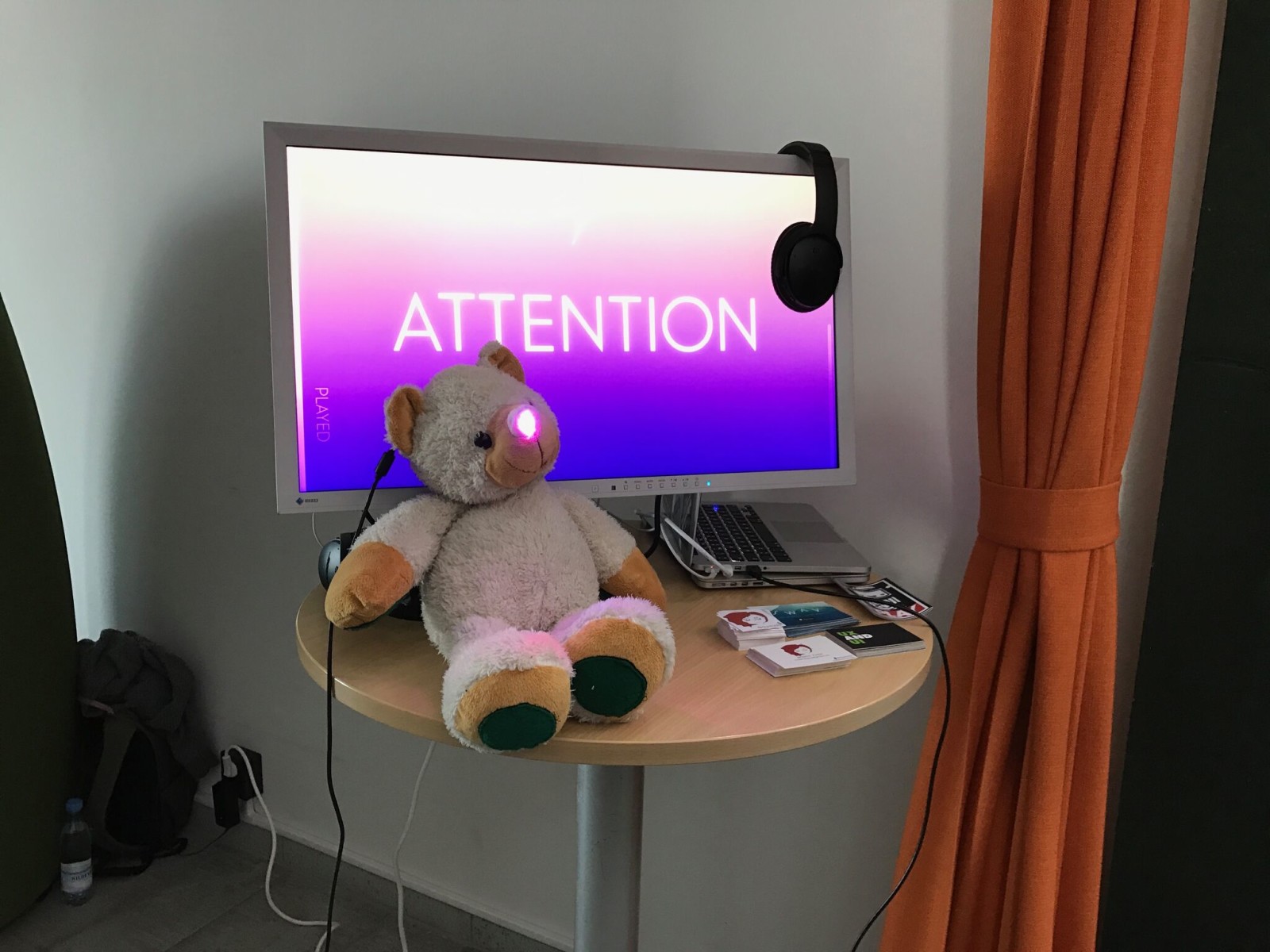
Building the Bear
To explore the space of emotional gaming I built an alternative controller myself. Inspired by a lecture by Miguel Sicart, I decided to use a toy that is designed to be loved- a teddy bear- and make it usable as a gamepad. A teddy bear encourages nurturing behaviour, is soft, cute, and familiar.
To turn the bear into a controller, I used soft electronics, an Arduino Micro and various sensors. The resulting bear is called Bert and can be used with any game that allows the player to assign their own keyboard and mouse input. Bert's hands behave like buttons when pressed, his nose can light up in various colors, turning his head simulates the mouse input and he even has a hugging sensor that can be used as a button or a pressure sensor.
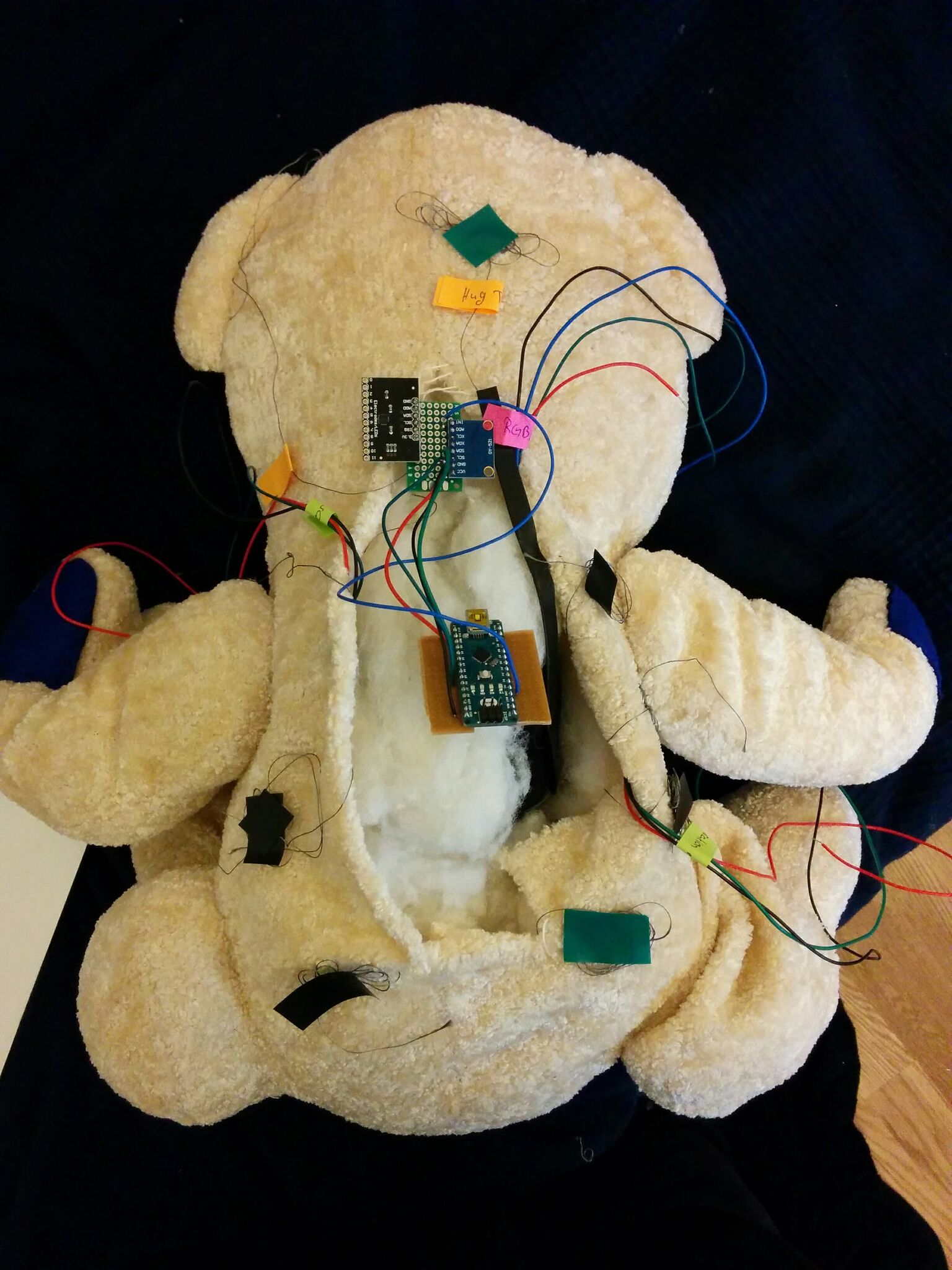
A few tests and some user feedbackThe first playtest showed the potential that the controller has for emotional experiences. Players were asked to play a simple asteroids game clone by pressing the left or right paw of the bear to move their spaceship in that direction, and to hug Bert to activate a shield. The prototype was still rough and the hug sensor moved a bit which required testers to slightly choke the bear to activate the shield. The shield is a significant game advantage but most players chose not to use it because they "don't want to hurt the bear". This could be observed over multiple playtests and even during the tests of later prototypes, players were concerned about the well being of the teddy. They felt uncomfortable twisting Bert's head too much or pressing his paws too hard. Furthermore players had strong opinions about what kind of game experience they would expect or want to play with Bert.
The experience players reported was strongly tied to the context that was given to them either before they started playing the game or through the game itself.
Players testing the asteroid game were irritated about the spaceship’s controls but when the assets were changed into a racing game in which the player controls a scooter with a teddy bear sitting on it, they understood the controls directly. The gameplay was not changed at all but the different phrasing provided a better context for the players and made the experience more relatable.
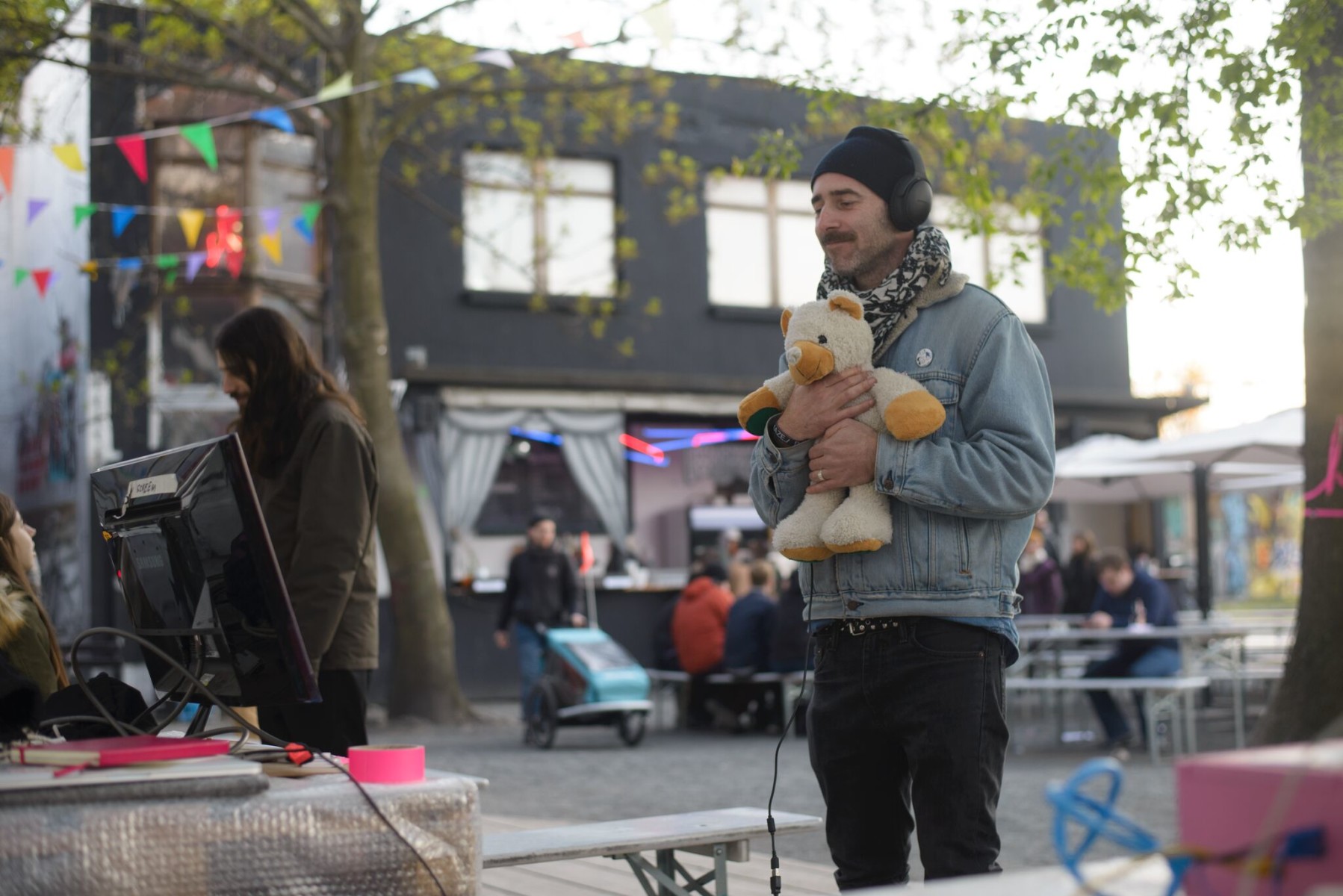
Specific controllers for specific emotions
In the play tests, many users suggested that using Bert as a controller for calmer games could be nice. Sway is a meditation experience that ustwo developed together with PausAble which complements the teddy bear perfectly. In the slightly adapted version, users held Bert in their arms and swayed together with him. While doing so they just focused on their movement and relaxed. We showcased this experience at the Amaze Festival in Berlin and Creative Coast in Karlshamn. Players said "The experience was a nice break from the hectic conference". With the teddy, Sway might even be a tool to teach meditation to children.
The teddy bear shapes the context we play games in and gives the actual physical connection some value without reducing the digital experience. It is a first deep dive into the potential that alternative controllers hold for increasing accessibility, emotional gameplay and reducing stress and violence in games.
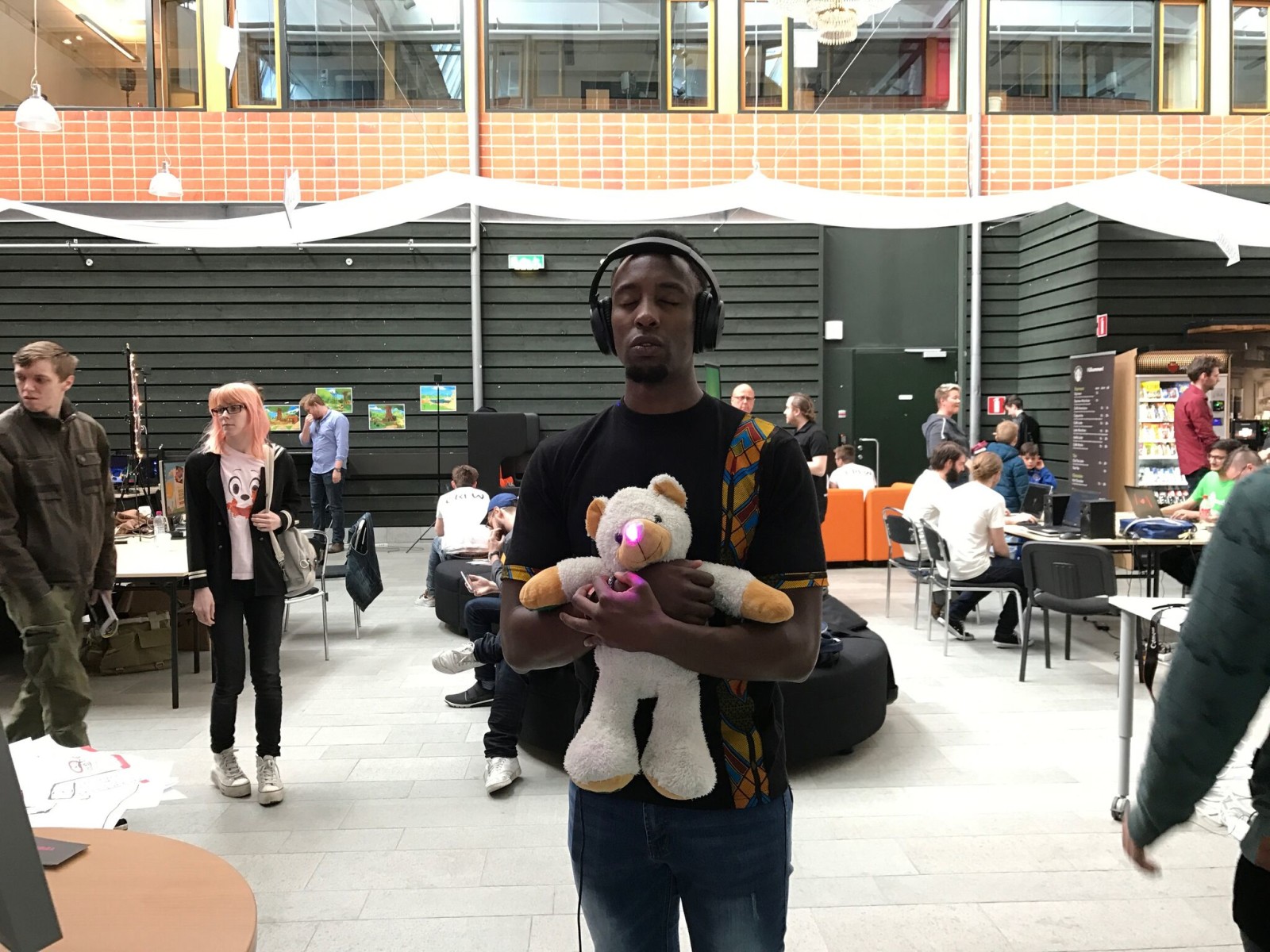
Looking ahead
To create deeper and more engaging game experiences, developers should leave the beaten path and see custom hardware and individual control schemes as a design challenge rather than an obstacle. This does not have to be analogue; games like Bounden, Clapper and Keyboard Sport use common devices like tablets but introduce unique controls to create better experiences.
In Bert’s future there will be more testing with kids, maybe even as a standalone experience rather than as a gamepad. Bert could be a companion for children, and could remove focus from the screen and bring it back into physical space, yet enhance it through digital design. It would be great to refine the prototype and produce Bert on a larger scale to get it into more people’s hands. Guitar Hero has shown that there still is a place for custom hardware in our homes, but there’s still a long way to go for more widespread adoption of alternative controllers.
You can download Sway here or get in touch with us at hello@ustwo.com.
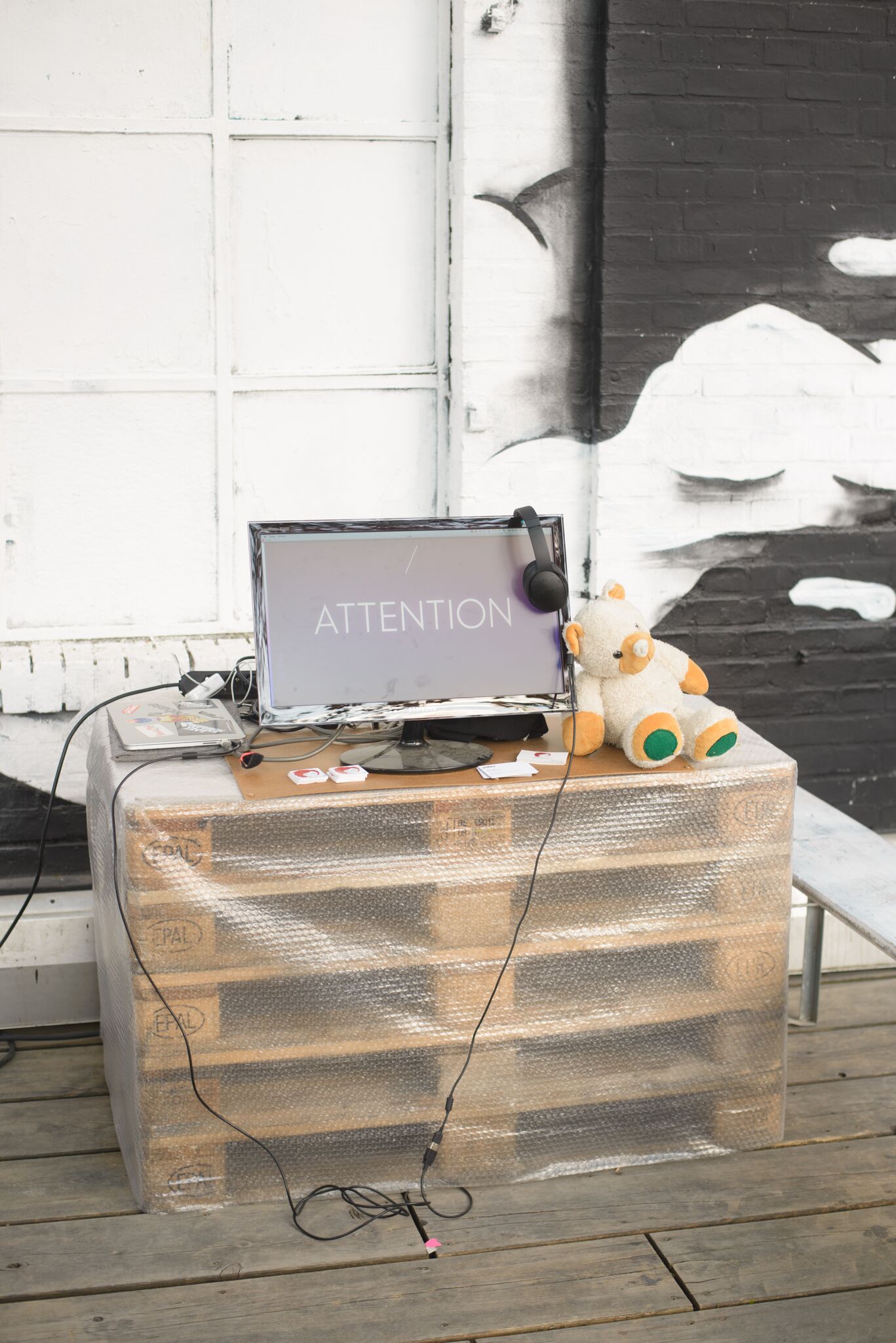

Malena Klaus became a game developer to fulfil a lifelong desire to invent things. In cooperation with ustwo, she wrote her master’s thesis in Game Technology. Now she works as Gameplay Programmer. Malena is very fond of AI and food.
